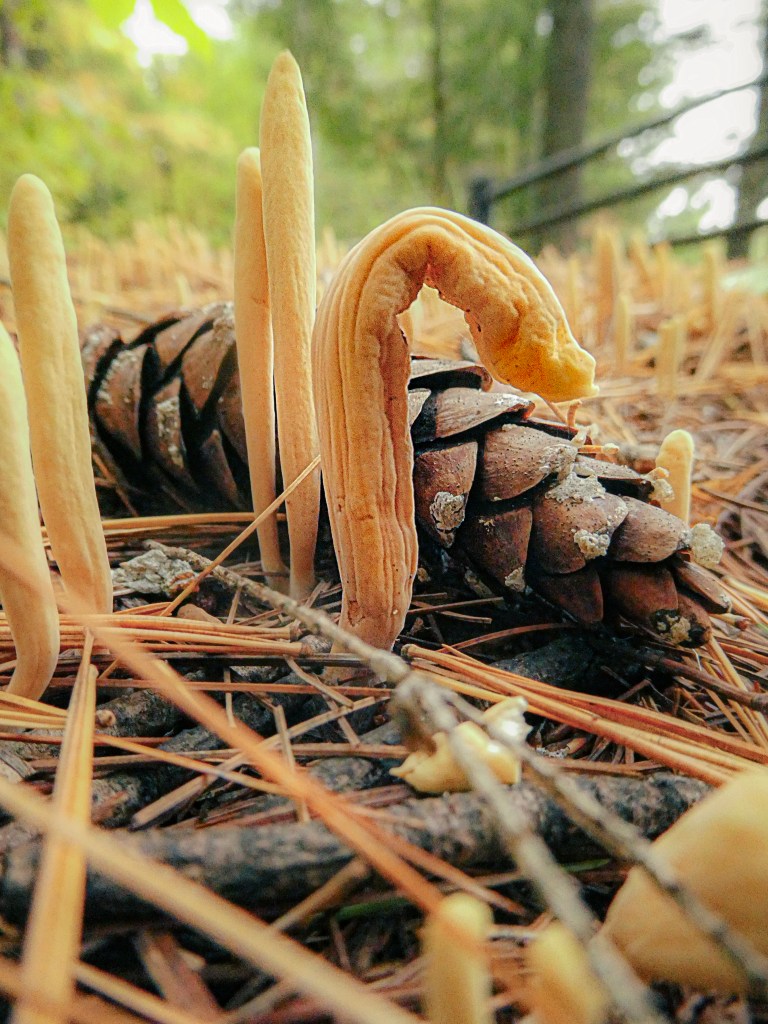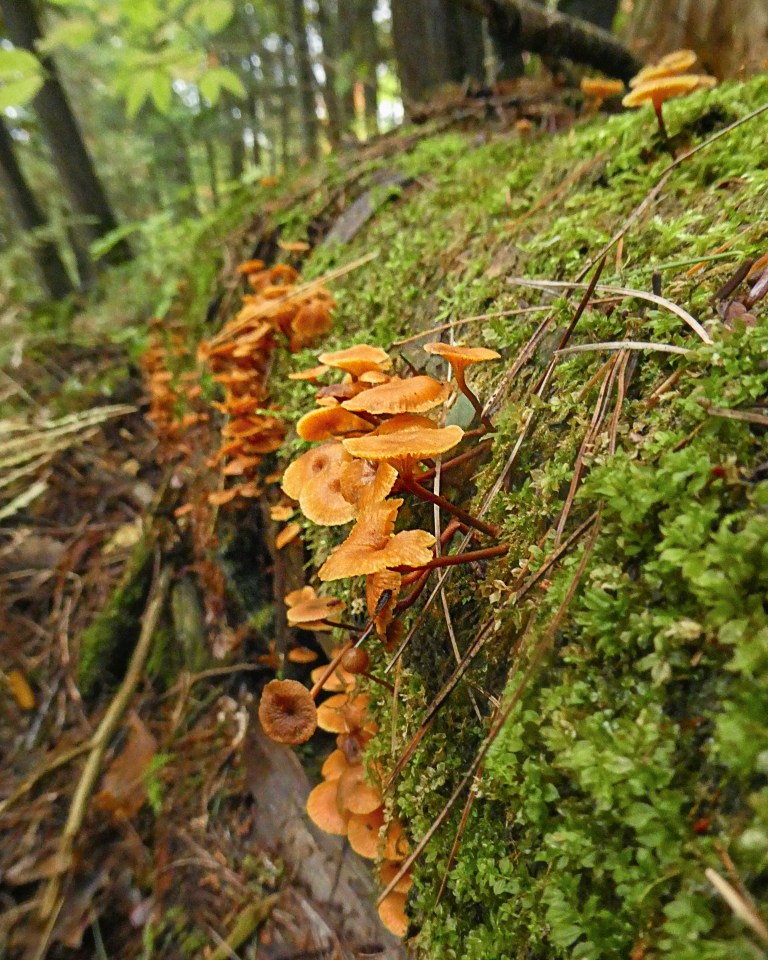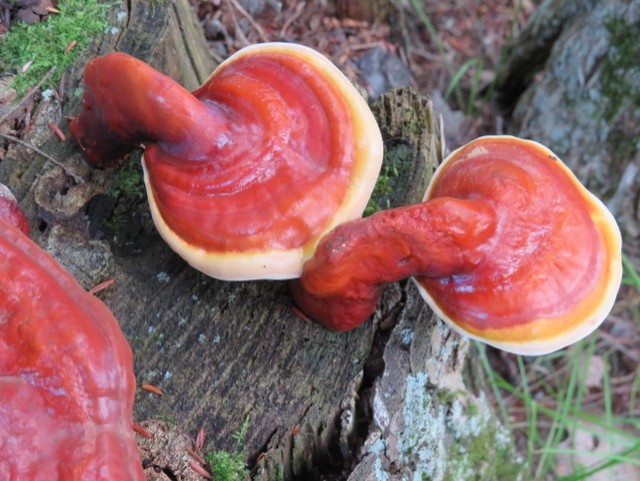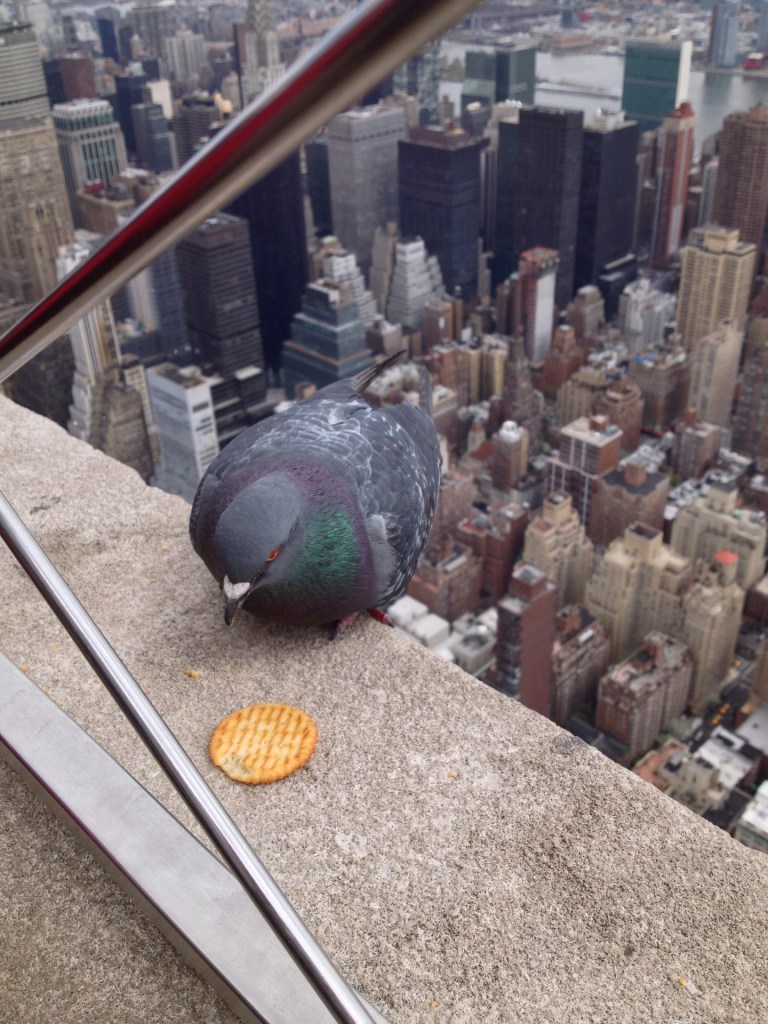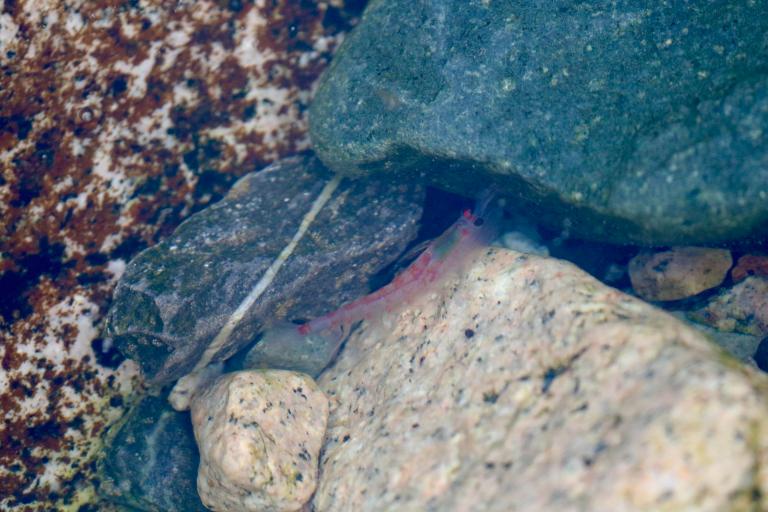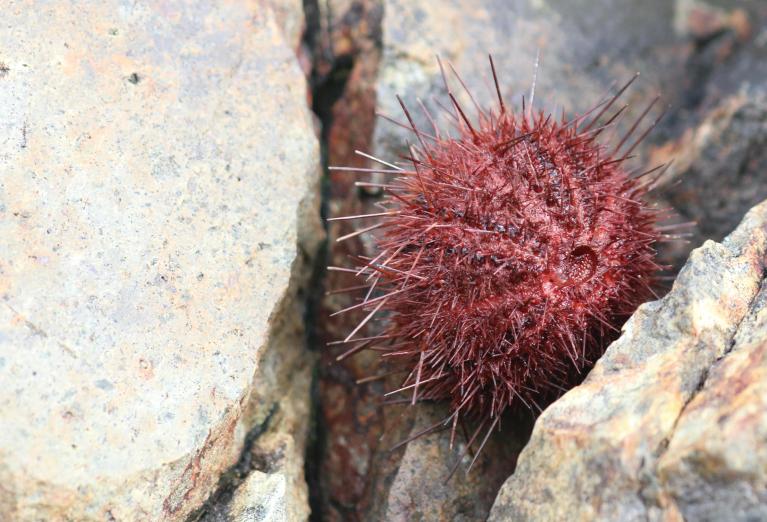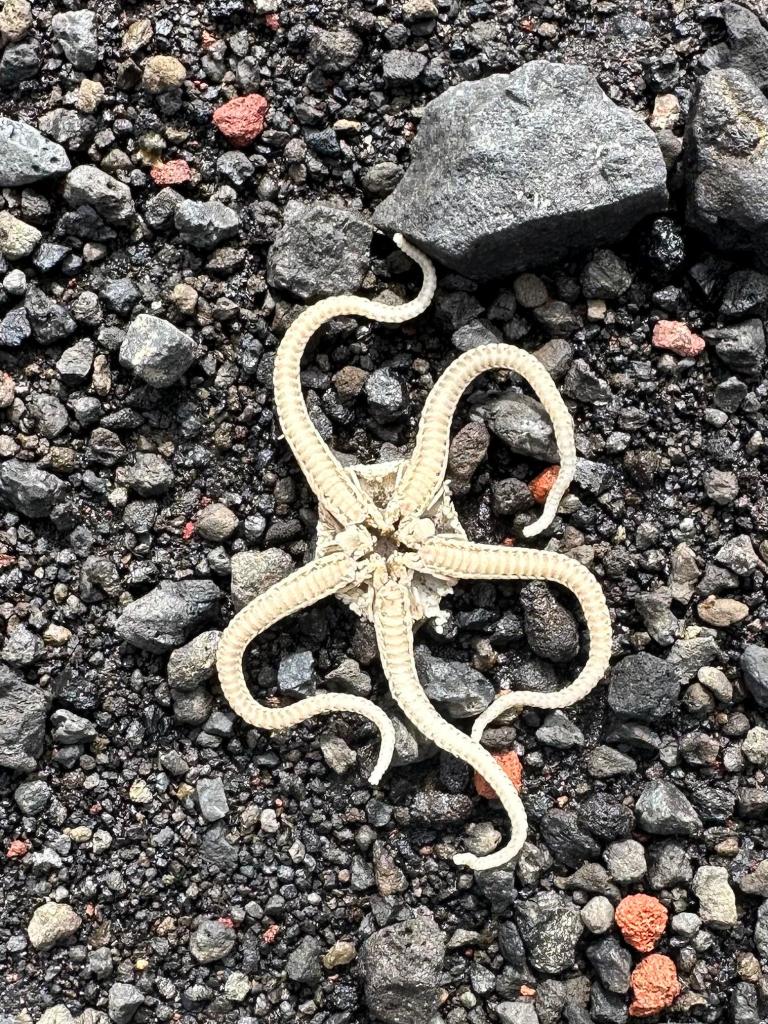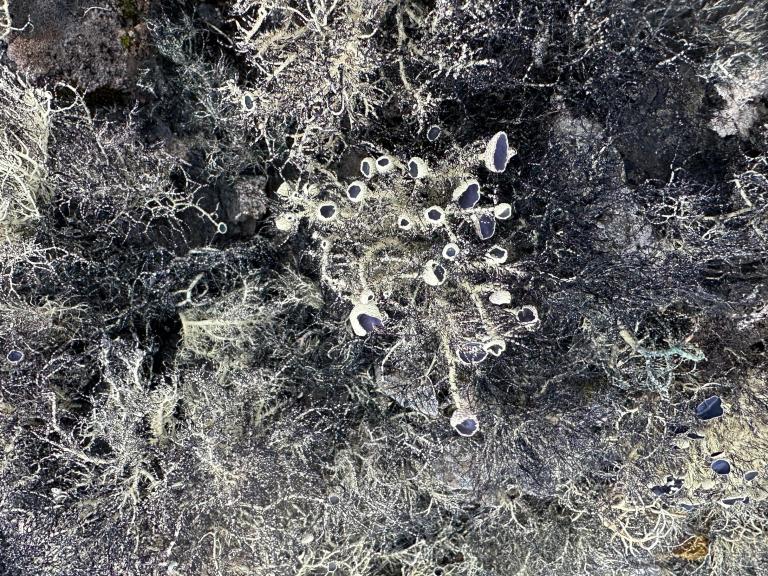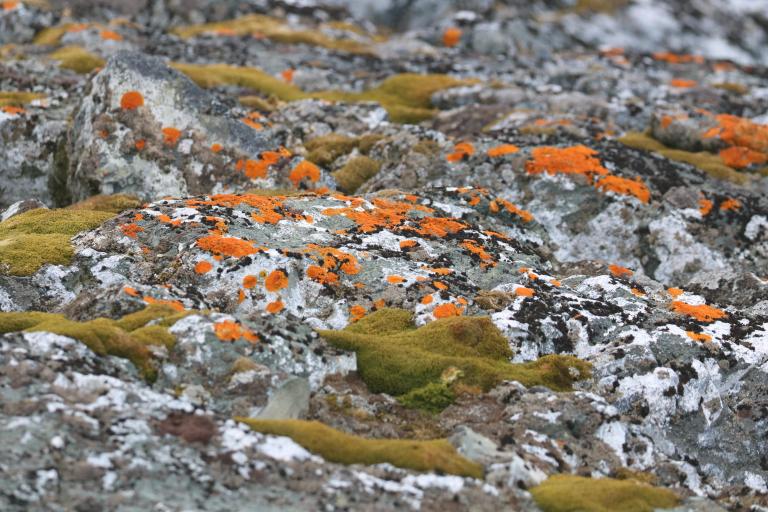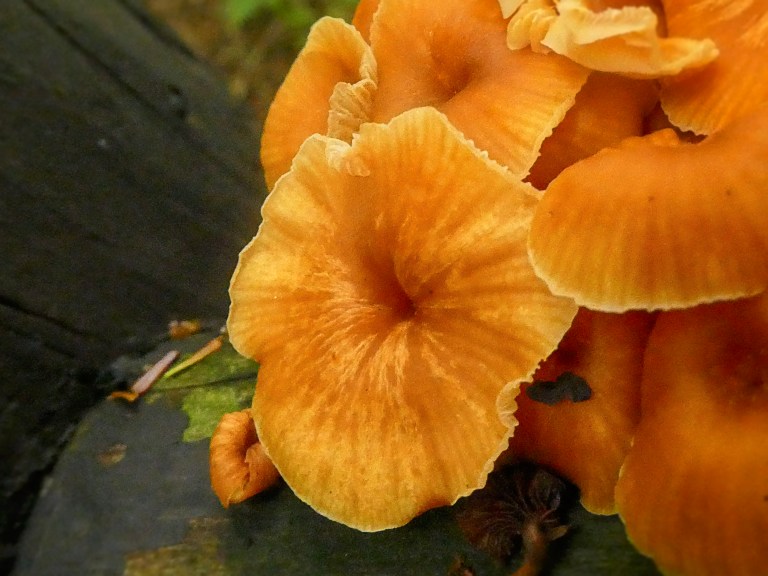Two readers came through with batches of photos, so I think we’re good until Wednesday. If you have good one, well, I can always use them. Thanks!
Today’s photos of fungi come from reader Rik Gern from Austin, Texas.. His notes and IDs are indented, and you can enlarge the photos by clicking on them.
*************************
A few weeks ago I sent you some pictures of mushrooms from Copper Falls State Park in Morse, Wisconsin. Here are the rest of the species I observed on that hike.
This lone sentry was at the very beginning of the trail. I wasn’t able to identify it precisely, but it may be from the Rhizopogon family, or maybe not; I had a hard time finding any information that could confirm its identity. On a walk of several miles, this was the only mushroom of it’s kind that I saw.
It would be easy to mistake this fungal cluster for an order of fries abandoned by a careless hiker, but in reality it is Clavariadelphus americanus. I couldn’t find a common name for them, so for now I’ll cal them French fry mushrooms.
They weren’t all grouped so tightly together though; there were a few open patches of pine needles bursting with these odd looking mushrooms:
Late in the hike, as the sun was getting low, these Golden trumpets (Xeromphalina campanella) came into view. According to Wikipedia, “The genus name Xeromphalina means “little dry navel” and campanella means “bell-shaped”, respectively describing the mature and young shapes of the pileus, or cap”. You can see an example of that here with the two smaller mushrooms sporting convex caps while those on the larger mushrooms are starting to go concave.
Golden trumpets like to grow on logs and all of these pictures are from the same fallen tree:
Here is a view of their brownish red stalks.
The black and white picture gives the effect of some large plants growing in an underwater cavern. The lower right hand part of the image has a number of little white dots that look like dust spots on the picture, but when you look closely you can see that they are tiny insects trapped and wrapped up in a spider’s web.
The nearly horizontal rays of the setting sun did a nice job of highlighting the gills of these mushrooms and giving them a majestic look. Once again we can see the downward facing caps on the presumably younger mushrooms on the bottom and the upward arching caps on the older mushrooms on the top.
Links:
Golden trumpet (Xeromphalina campanella)





